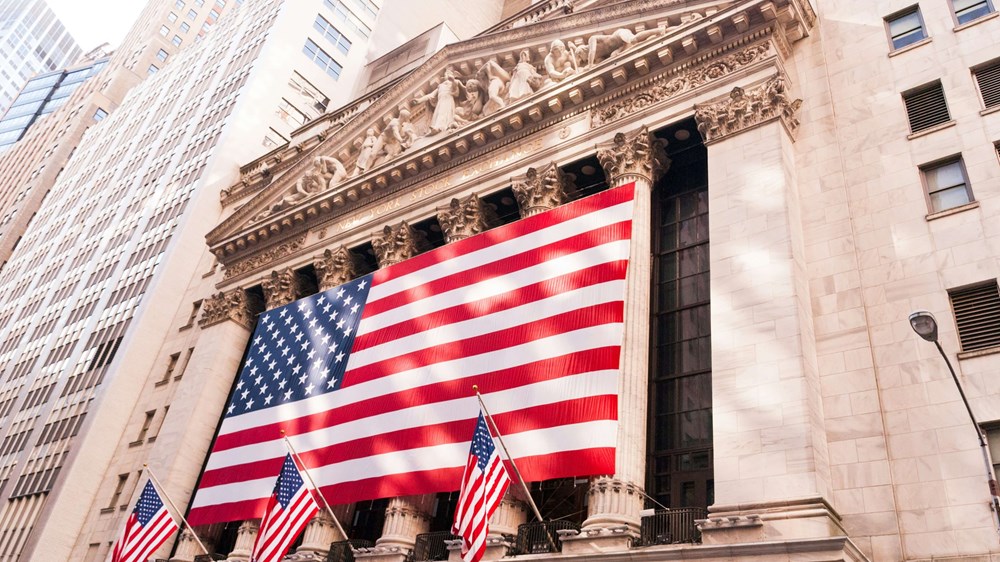Overall, 2024 was a positive year for global markets; inflation seems to be under control, interest rates started to drop, and the odds of a soft-landing scenario (a slowdown in economic growth without the risk of recession) increased.
The US led last year’s charge, with the S&P 500 up over 20% (and still close to all-time highs), as many other major indices also posted double-digit returns.
Closer to home, UK and European market returns were more subdued, posting single-digit returns.
The major event in 2024 for UK markets was the general election.
This marked a substantial shift in British politics, with the Labour party regaining power for the first time 14 years.
The prospect of change from a government said to be pro-growth, pro-business, and pro-investment sparked optimism among investors — particularly in the potential for small businesses.
Then came the Autumn Budget, which had its own effect on markets; UK government bonds declined, as some investors were worried about the potential level of borrowing.
One of the more pivotal shifts in global markets last year was the beginning of the much-anticipated rate-cutting cycle. Historically, the US Federal Reserve (the Fed) has been first to cut, followed by other central banks.
This time, however, the European Central Bank (ECB) was the first to take the plunge in June, followed by the Bank of England in August, with the Fed only lowered theirs in September.
Speculation of further rate cuts continued throughout the year and will continue to be a key factor for markets in 2025.
Volatility played a key role in 2024, as the release of unexpected data created quick changes in investor sentiment. This was seen in August, when the release of US jobs data caused concern for the health of the US economy — with markets falling dramatically as a result.
Large tech companies saw the worst effects, with the Magnificent 7 losing nearly US$1 trillion in market capitalisation.
Asian markets had a strong year, as Japan enjoyed returns of over 15%.
2024 also saw a historic move by the Bank of Japan, as they increased interest rates for the first time in 17 years, taking Japan out of negative interest rate territory. This represented a significant shift in Japan’s monetary policy, brought on by improving economic indicators, such as steady inflation and wage growth.
China – a somewhat unfavourable market over the past decade that hasn’t seen all-time highs since 2018 – also saw double-digit returns.
The release of government stimulus provided a much-needed boost to Chinese markets. There is more work to be done, however, to resolve issues such as depressed domestic demand and poor consumer confidence (due to the flailing property sector).
Finally, we had the landmark US election result, which saw Donald Trump re-elected.
Few topics generate as much market interest as a US election — and this one was no different.
In one of the most hotly contested elections in years, Trump’s victory sparked both optimism and fresh uncertainty among investors.
Outlook for 2025
The US election shifted the outlook for 2025 dramatically.
In the short term, US markets reacted well to the result, providing a much-appreciated boost to share prices at the end of 2024.
However, there is much speculation about the impact of some of Trump’s policies and proposed tariffs.
There are also worries that many of his pro-growth strategies – propped up by more fiscal easing – could be inflationary.
Whilst interest rates began their decline late in 2024 – and are expected to continue falling over the next 12 months – there is a risk that markets will react negatively if those expectations are pushed back (and investors don’t get the number of rate cuts they’re expecting).
The most recent Fed meeting was clear evidence of this. Although the Fed announced a rate cut, its Chair, Jerome Powell, advised caution.
Rate-cut expectations from Fed members in 2025 have dropped from four to two, as inflation might remain higher than expected. As a result of this announcement, markets pulled back considerably, leaving a slightly disappointing end to the year.
Whilst probabilities of a soft landing for the US economy have improved post-election, this also brings up the “no-landing” scenario.
This is a situation where the US economy keeps growing and inflation reignites, making it harder for the Fed to cut interest rates. Overall, whether good or bad, this election result is likely to reinforce the idea of American exceptionalism.
Major economies – particularly Europe and China – will have to navigate the changes to US trade policy, which have potential to weaken their own growth prospects. The Eurozone economy was relatively stagnant throughout 2024, facing a range of cyclical and structural challenges.
This should, however, improve going into 2025, as falling inflation and lower interest rates help boost consumer confidence. In addition, what happens in China (a major consumer of European exports) will remain a key driver.
Geopolitical events will also continue to weigh on investors’ minds in 2025.
While these events are often unpredictable and difficult to trade around, the team will continue to monitor any developments that could impact Plans.
The UK will also have to navigate the new geopolitical climate.
Given the UK’s exports consist mainly of services, the worst of the tariffs may be avoided — but their full effect is still unclear.
It’s also early days for the new Labour government. However, with latest gross domestic product (GDP) figures showing little growth and businesses bracing themselves for the upcoming increase in National Insurance, the next few months will be crucial for Labour’s economic reputation.
Risks also remain surrounding the disproportionate influence of mega caps such as the Magnificent 7, which played a huge role in markets throughout 2024. The earnings these companies need to deliver to satisfy investors is becoming increasingly challenging.
Despite beating estimates, an example of this is Nvidia’s stock price drop after posting its earnings report in November.
The development of Artificial Intelligence (AI) has obviously been a huge driving factor for these companies. And, as we continue to learn more about AI’s everyday potential, their growth prospects will be affected accordingly.
Despite valuations being a poor timing tool, these companies (and indeed the whole market) are close to all-time highs, suggesting caution to the experienced investor.
Because of this, we hold a relatively cautious position for your Investment Plans, currently slightly underweight on what would be our neutral equity position. We increased your exposure to shares throughout 2024 and, whilst it’s clear that sentiment and momentum are playing an ever-increasing role in markets, we remain confident in this positioning.
We’re still seeing a lot of risks in the market that may not be fully appreciated, as valuations of markets like the US have only become more inflated since the US election.
At Wealthify, this is something we’ll continuously evaluate going through 2025.
We’ll be looking for opportunities to best position your investments — with the goal of protecting your money and achieving your long-term objectives.
We’re also optimistic that the diverse set of opportunities we’ve selected will continue to have a positive effect on Plans, whilst providing protection if economic conditions change.
Please remember the value of your investments can go down as well as up, and you could get back less than invested.
Past performance is not a reliable indicator of future results.
Wealthify does not provide financial advice. Please seek financial advice if you’re unsure about investing.



